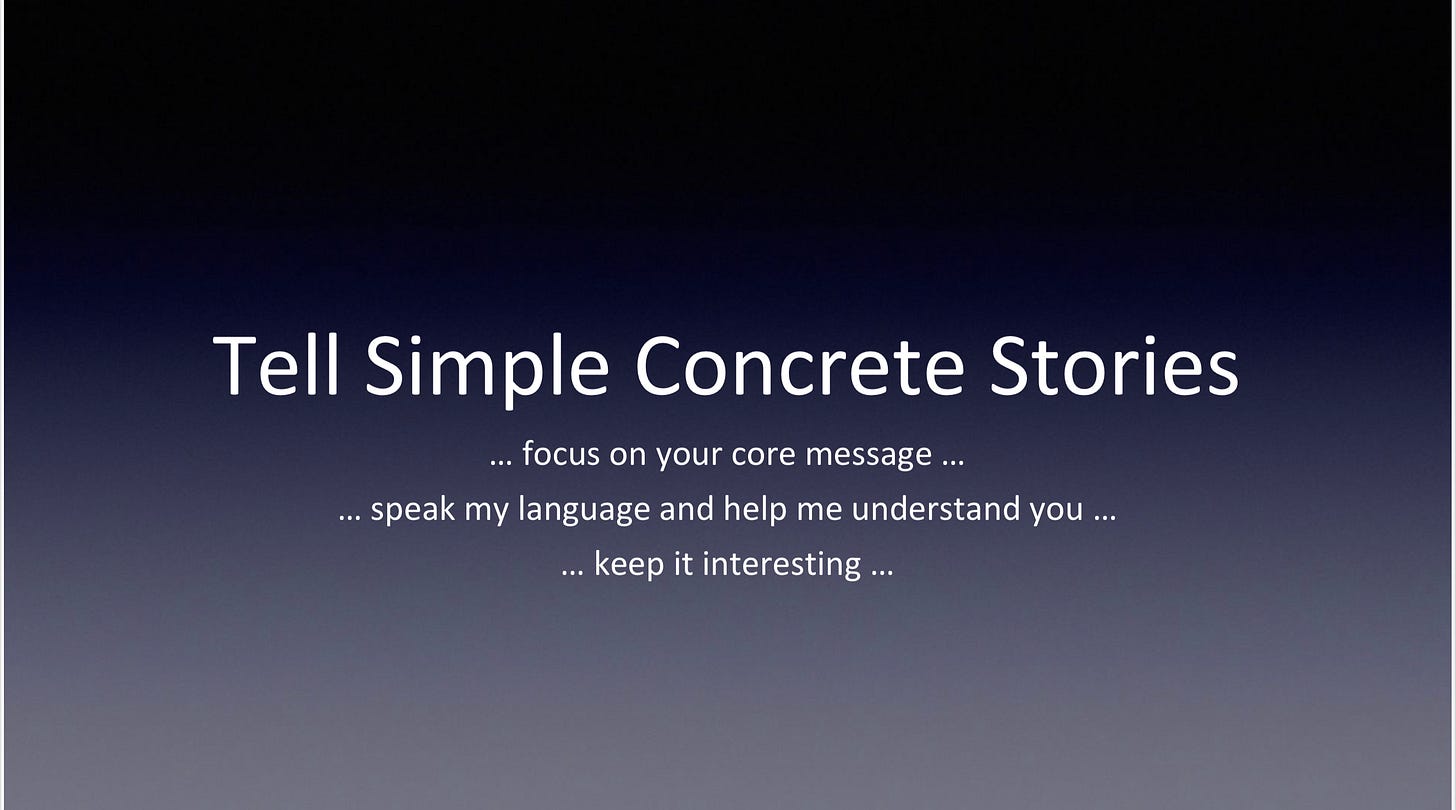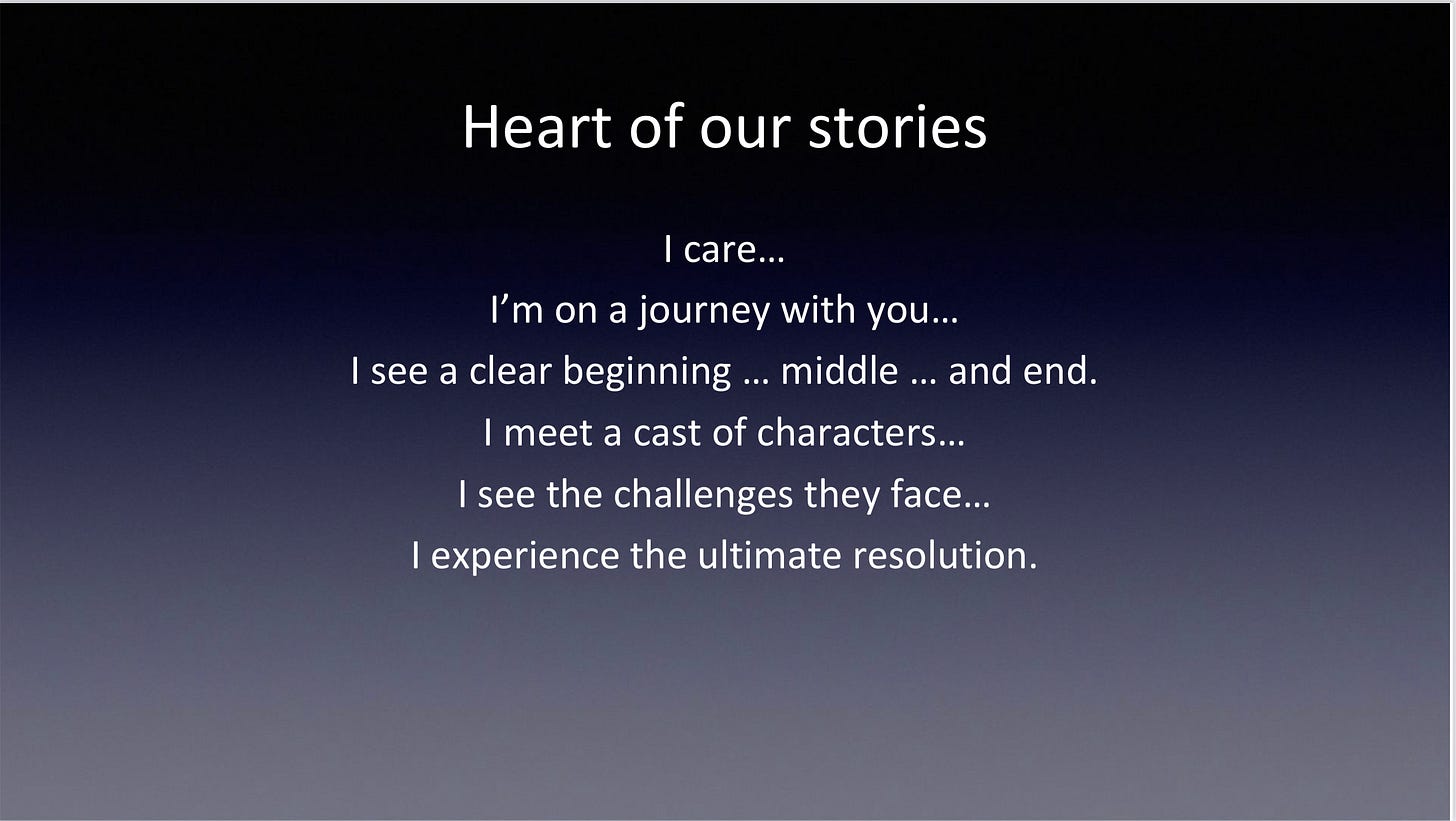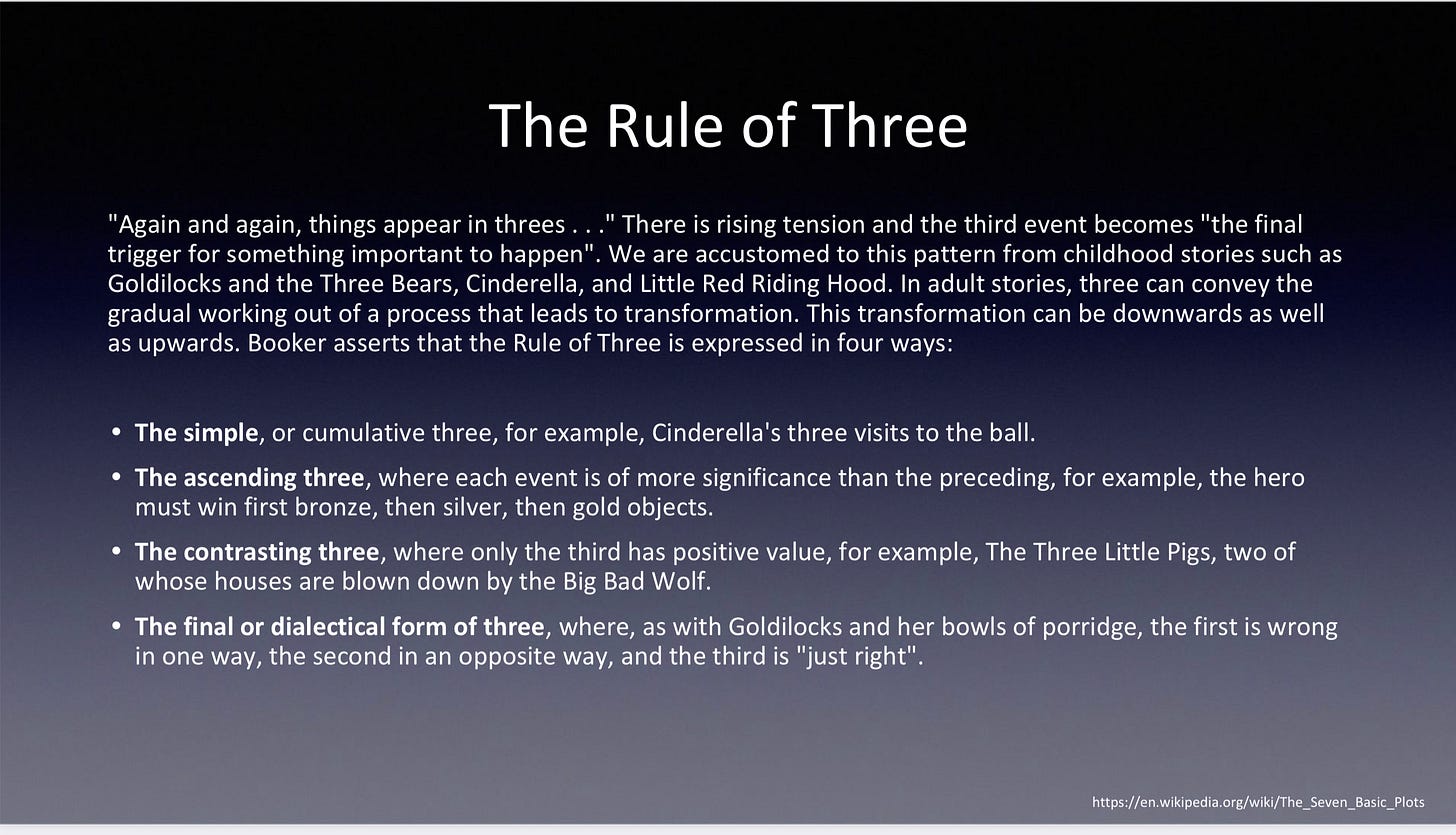The A-B-T framework discussed in Part 1 introduces a simple 3-part story-structure and introduces an element of tension or conflict.
Act 1: And…
Act 2: But…
Act 3: Therefore.
And allows you to hit two main points about your research. Focus on a relevant fact for the synthesis study. Or focus on an aspect of your topic you have researched for years but is new and interesting to your audience.
But introduces conflict! This is the heart of narrative storytelling. We transition away from the world as we knew into the reason why this research is necessary.
Therefore is a synthesis word that ties your goals together and promises to deliver a “resolution” to your audience. In this portion, address how your research will solve the problem articulated in the “But” statement. Your work may not be resolved, but by incorporating a resolving statement you can generate a connection between your work and your audience.
Stories are also characterized by their plot!
All good stories have a plot! Have you ever seen the Disney-Pixar animated film Wall-E? The movie has very little spoken dialogue but, even without words, you follow a very clear plot-line and a very clear story.
Understanding The Seven Basic Plots by Glen Strathy is a great summary of Christopher Booker's book, The Seven Basic Plots: Why we tell stories.
When you are struggling with a story, it can be helpful to look at the well-worn paths created by successful authors, because it can help you avoid most of the pitfalls you could stumble into otherwise. And, to be fair, Booker's theories are not quite as limiting as his title suggests for the following reasons...
A. Despite calling the book, The Seven Basic Plots, Booker actually identifies nine basic plots. These are...
Overcoming the Monster: in which the hero must venture to the lair of a monster which is threatening the community, destroy it, and escape (often with a treasure).
Rags to Riches: in which someone who seems quite commonplace or downtrodden but has the potential for greatness manages to fulfill that potential.
The Quest: in which the hero embarks on a journey to obtain a great prize that is located far away.
Voyage and Return: in which the hero journeys to a strange world that at first is enchanting and then so threatening the hero finds he must escape and return home to safety.
Comedy: in which a community divided by frustration, selfishness, bitterness, confusion, lack of self-knowledge, lies, etc. must be reunited in love and harmony (often symbolized by marriage).
Tragedy: in which a character falls from prosperity to destruction because of a fatal mistake.
Rebirth: in which a dark power or villain traps the hero in a living death until he/she is freed by another character's loving act.
Rebellion Against 'The One': in which the hero rebels against the all-powerful entity that controls the world until he is forced to surrender to that power.
Mystery: In which an outsider to some horrendous event (such as a murder) tries to discover the truth of what happened.
The Rule of Three is also prominent:
Telling a Technical Story
Check out this short Ted Talk and reflect on how the speaker uses the A-B-T framework along with a basic plot and the Rule of Three.
Does the speaker employ one of the “Basic Plots?”
Does he leverage A-B-T?
Do you think this presentation is “sticky”? Why or why not?
Use the comment button below to respond!





The use of sound in this is brilliant, and I really like the speakers hook. To answer the last question first, sure, I would call this presentation sticky. He definitely made a story out of what is, as he sort of jokes about, an issue that is talked about so much that some people find it trite. The visuals were really good and the through line was super clear, and I can remember his cell phone solution after watching the video.
He leverages the ABT framework well -
And: He tells a story about the rain forest and highlights new and interesting parts of the rain forest, especially regarding sound.
But: He introduces the conflict: logging. This is the threat to the rainforest and the problem that must be overcome.
Therefore: he ties the threat into his solution with cell phones. It really paints a picture of the importance of his work.
In terms of basic plots, I think he used the Overcoming the Monster plot, for lots of reasons other commenters have said. By confronting the loggers that were threatening the community, he "braved the lair" [ rain forest ] and stopped that particular instance of the threat. He uses that plot as the basis to demonstrate the importance of his idea to utilize cell phones as a means to stop logging.
In this Ted talk, the speaker appeared to use the "overcoming the monster" plot by showing how he ventured into the forest bravely, to confront and stop the illegal loggers that were threatening the forest. I believe he does use the A-B-T framework by taking the audience on a journey through his story. He slowly builds up the talk by sharing information about the forest - the types of animals that live there and why the forest is important, to how deforestation is causing more global emissions than transportation combined, and then shares his simple solution that could help save forest and therefore our climate disaster by employing a way to reduce logging. He seems to spend most of his time on the A and B part, focusing on the details/events that lead up to his solution. He starts by sharing the sounds of the forest and uses this tool to highlight the life that thrives there. I think this part is sticky because its unexpected and memorable. In addition, I think by sharing a personal story where there is potential conflict captures the audiences attention in a memorable way.